Meet the Indonesian artist who turns household waste into shadow puppets
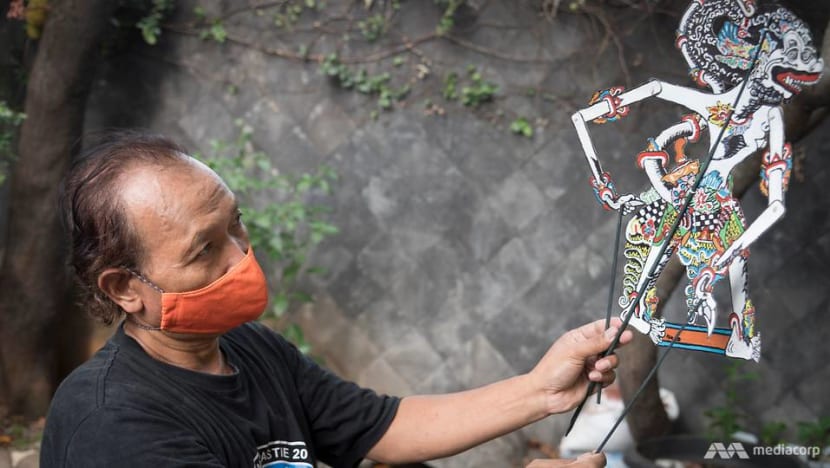
Indonesian artist Iskandar Hardjodimuljo showing a puppet he made out of discarded cardboard boxes. (Photo: Nivell Rayda)
JAKARTA: There is a rustic feel and charm to the shadow puppets produced by Indonesian artist Iskandar Hardjodimuljo.
They are far from being the exquisite, classical work of art meant for the hands of seasoned puppet masters who frequently perform in large concert halls and royal courts.
Instead, they are crudely painted in bright and bold colours, meant to be sold to - sometimes gifted to - school children and members of the public.
But the biggest difference from the traditional version is that Hardjodimuljo’s wayang (puppets) are not intricately carved out of dried leather or wood, but old cardboard boxes, discarded plastic bottles and food containers.
READ: Keeping it old school: A man's 40-year passion in lantern making for Mid-Autumn in Malaysia
“Through my wayang, I want to convey environmental, cultural and social messages,” the 55-year-old artist told CNA.
“I want to introduce people to wayang, especially children. I also want to teach them that waste can be transformed into works of art and something of great value and use.”
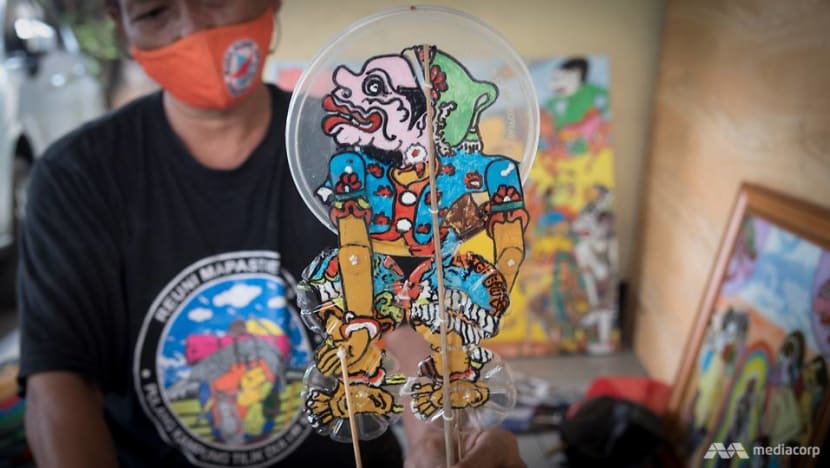
HOW IT ALL BEGAN
Hardjodimuljo has always been fascinated with wayang since he was a child growing up in a village just outside of Yogyakarta City, the cultural epicentre of Java where the last reigning Javanese sultan resides.
But he never thought of pursuing a career as an artist, let alone a puppet maker. “In high school, I once made batik with wayang motif. In university, I wasn’t interested in art at all.”
READ: Traditional shadow puppetry with a modern twist revives dying interest in Malaysia
His passion for art only blossomed after he became an accountant, a profession he held for 25 years.
“I painted as a hobby. I was completely self-taught and my subject of choice has always been wayang to reminisce my childhood watching all the wayang plays performed at my village,” he said.
Slowly, Hardjodimuljo’s reputation for being one of just a handful of artists who exclusively chose the subject of wayang for their paintings grew. He started getting invitations to participate in art exhibitions in the 2000s.
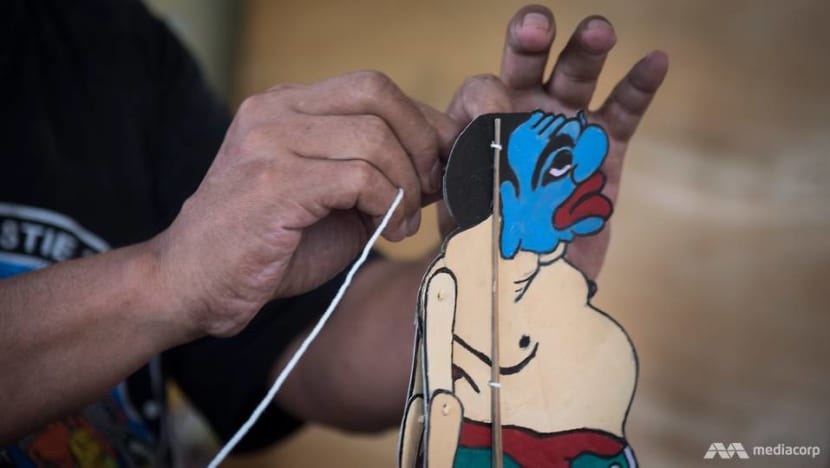
“It was a long process. But I decided to become an artist full time,” he said, adding that he quit his accounting job in 2012.
At the time, Hardjodimuljo was only painting wayang characters on canvas. He made his first puppet in 2013.
“I was participating in the Jakarta Biennale exhibition. The theme (of the exhibition) was ‘Art among Us,’” he said.
READ: Bangladesh's traditional weavers hanging by a thread as factories boom
“At the time I was a volunteer teaching art at a kampung on the banks of Ciliwung River. There was a big flood that year and the waters washed plastics, plywood and bottles to the place I was in,” the artist continued. “I thought to myself, I could make wayang out of these things.”
What started as an exhibition project for Hardjodimuljo soon became an obsession.
“I like making wayang out of trash. I can innovate with different materials. It pushes my creativity. Whenever I look at trash I immediately think, ‘What can I make out of this?’” he said.
HIS UNIQUE SHADOW PUPPETS
Hardjodimuljo proudly displays a collection of his Wayang Uwuh - uwuh means trash in Javanese - in his studio, along with several canvas and glass paintings depicting his favourite subject - wayang.
On the floor of his tiny studio were puppets made out of flattened water bottles and corrugated plastic sheets adorned by nothing more than black, detailed outlines of their faces and outfits.
The more colourful puppets are usually made out of cardboard, food containers and paper boxes and painted with acrylic paints and permanent markers.
While there are many artists creating art from recycled materials, Hardjodimuljo is the only one which transforms them into wayang.
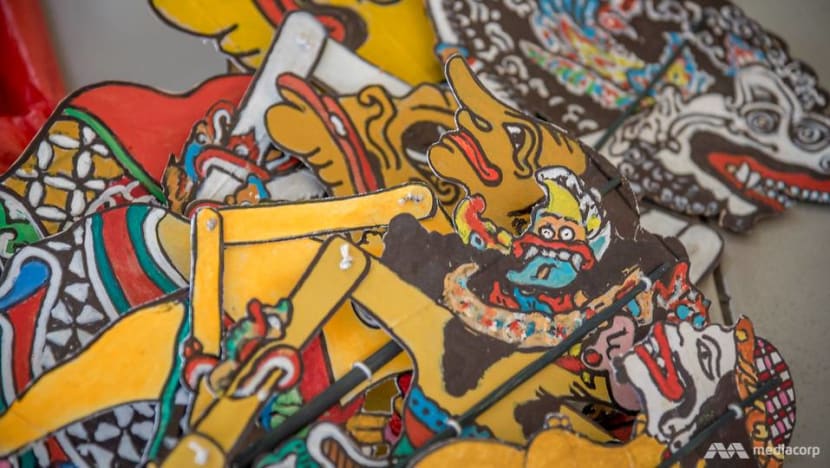
“I want to revive interests in our cultural heritage. Wayang is becoming less and less popular among youths. They care more about Western and modern music and art,” he said.
PRESERVING CULTURAL HERITAGE
Hardjodimuljo said he wanted to show young people that wayang is just as exciting as modern art. For a start, there are hundreds of characters in shadow puppetry, each with its own physical and emotional traits and unique magical powers.
There are wayang characters who can fly and penetrate the earth. Some have toxic feet and are impervious to any conceivable weapon.
“Wayang in Indonesia also has many styles unique to different places throughout Java, Bali, Lombok and Sumatra,” he said.
And the artist tried to incorporate the different characters and styles in his work. “So people will appreciate our rich culture,” he said.
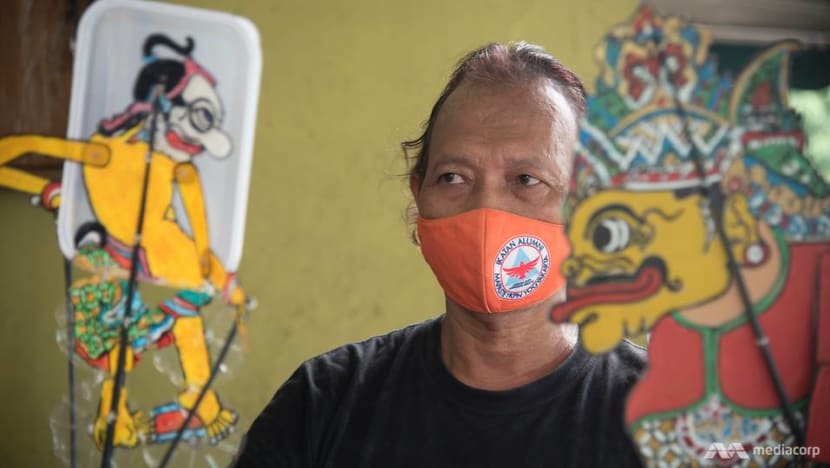
Hardjodimuljo said Wayang Uwuh has afforded him the recognition he longed as an artist. Through his efforts in turning waste into wayang, he has been invited to stage exhibitions across the world, from Thailand to Italy.
He also hosts workshops for children and aspiring artists, teaching them the ropes on how to turn waste into puppets.
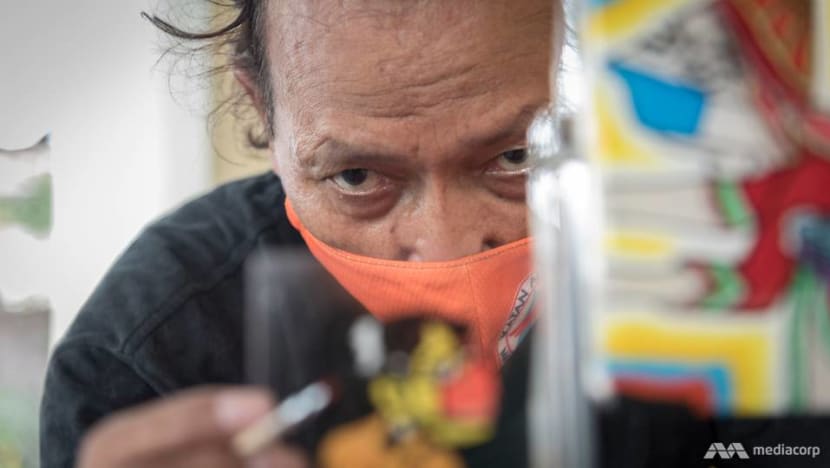
“Although I have been to many countries, nothing gives me more joy than teaching Indonesian children about wayang and the art of puppet making from trash,” he said.
“Right now, I am the only one who consistently makes wayang out of trash. My dream is there will be many more people who are interested in turning wastes into works of art as well as preserving our cultural heritage.”
Read this story in Bahasa Indonesia here.












